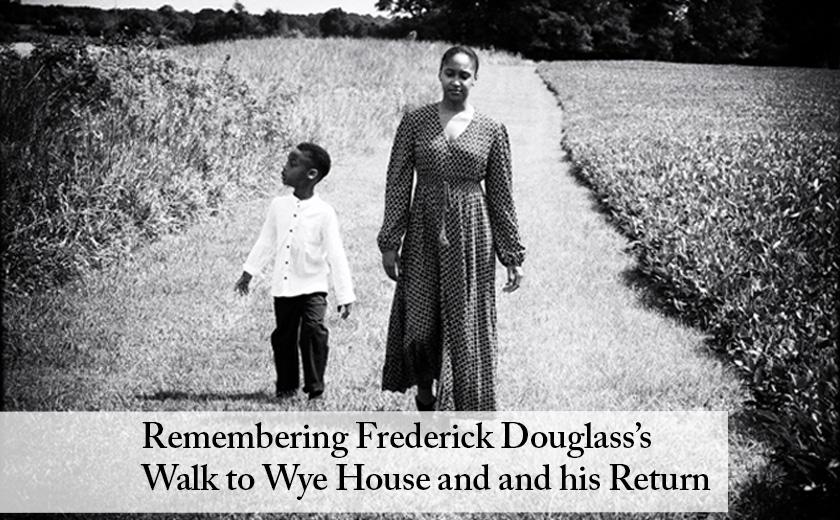Frederick Douglass Day in Talbot County is set for Saturday, September 24. It will begin with hundreds parading from Easton Middle School to the County Courthouse, a walk that will commemorate the experiences and achievements of the county’s most famous native son. It will also remind us of a walk 198 years earlier that involved just two people—six-year-old Frederick Bailey and his grandmother Betsey.
In August of 1824, Frederick Bailey, who would become Frederick Douglass, was being taken by his grandmother from the cabin that he had grown up in along Tuckahoe Creek to the Lloyd Plantation at Wye House twelve miles away. Betsey Bailey had nine daughters and at least twenty-five grandchildren, all enslaved. After their birth, many of the grandchildren grew up under her care, but with so many coming along, those reaching the age of six or seven would have to be moved out of her cabin to make way for the newcomers. Typically, they would be transferred to the home of their enslaver, Aaron Anthony. He was the chief overseer of the thirteen farms that were part of the Lloyd empire and lived on the Wye House grounds.
Frederick’s walk to Wye House was probably the first traumatic experience of a life that would be filled with traumas. Frederick rarely saw his mother, and now he was leaving the warmth of his grandmother’s care to be placed in what was, among other things, an orphanage for enslaved youth. But the experience was not just distressing for him. It must have been far more so for his grandmother who saw Frederick as the very special person he was and was fully aware of the potential path before him. Not only might she never see her grandson again, Betsey Bailey had no idea where a life of bondage and its attendant violence might eventually take him.
To observe this important event in Douglass’s life, Brie Wooden and her five-year-old son Keegan were invited to walk the Wye House grounds and imagine what Frederick and Betsey were thinking at the time. I was asked to photograph their meditation.
Looking at the resulting images, we can glimpse what may have been going in the minds of Frederick and Betsey. “The liability to be separated from my grandmother, seldom or never to see her again, haunted me,” Douglass wrote in one of his autobiographies. He remembered his “grandmamma” as “looking sad. She was soon to lose another object of affection, as she had lost many before.”
Frederick recalled that when he and his grandmother reached Wye plantation that August day, “Great houses loomed up in different directions, and a great many men and women were at work in the fields. All this hurry, noise, and singing was very different from the stillness of Tuckahoe.” Young Frederick must have stood there transfixed by the spectacle, gazing at the new world he was entering, wondering how his life would be changing.
As Frederick neared the end of the walk, he looked up at his grandmother. “I knew she was unhappy, and the shadow fell from her brow on me, though I knew not the cause.”
Frederick Bailey would return to Wye House as Frederick Douglass in 1881 when he was 63, and this time not on foot. He was transported there by the United States Revenue Cutter Guthrie that docked at the farm’s landing. In those intervening 57 years, Frederick Douglass had become a fixture in America’s history, one of the most consequential figures of the nineteenth century. He was invited by members of the Lloyd family into “the Great House” and graciously entertained. The shadow that had fallen from his grandmother’s brow so many years earlier had been obliterated by the brilliance of his works during the intervening half century. “To say that our reception was every way gratifying is but a feeble expression of the feeling of each and all of us,” Douglass penned.
Frederick Douglass Day will be held on Saturday, September 24, 2022. The program and schedule can be downloaded here.
Jeff McGuiness was the senior partner of a public policy law firm based in Washington, DC, and founder of HR Policy Association. A fine arts major in college who served as a photographer in the Air Force during the Vietnam War Era, he is the author of the forthcoming book, Bear Me Into Freedom: The Talbot County of Frederick Douglass.






Write a Letter to the Editor on this Article
We encourage readers to offer their point of view on this article by submitting the following form. Editing is sometimes necessary and is done at the discretion of the editorial staff.